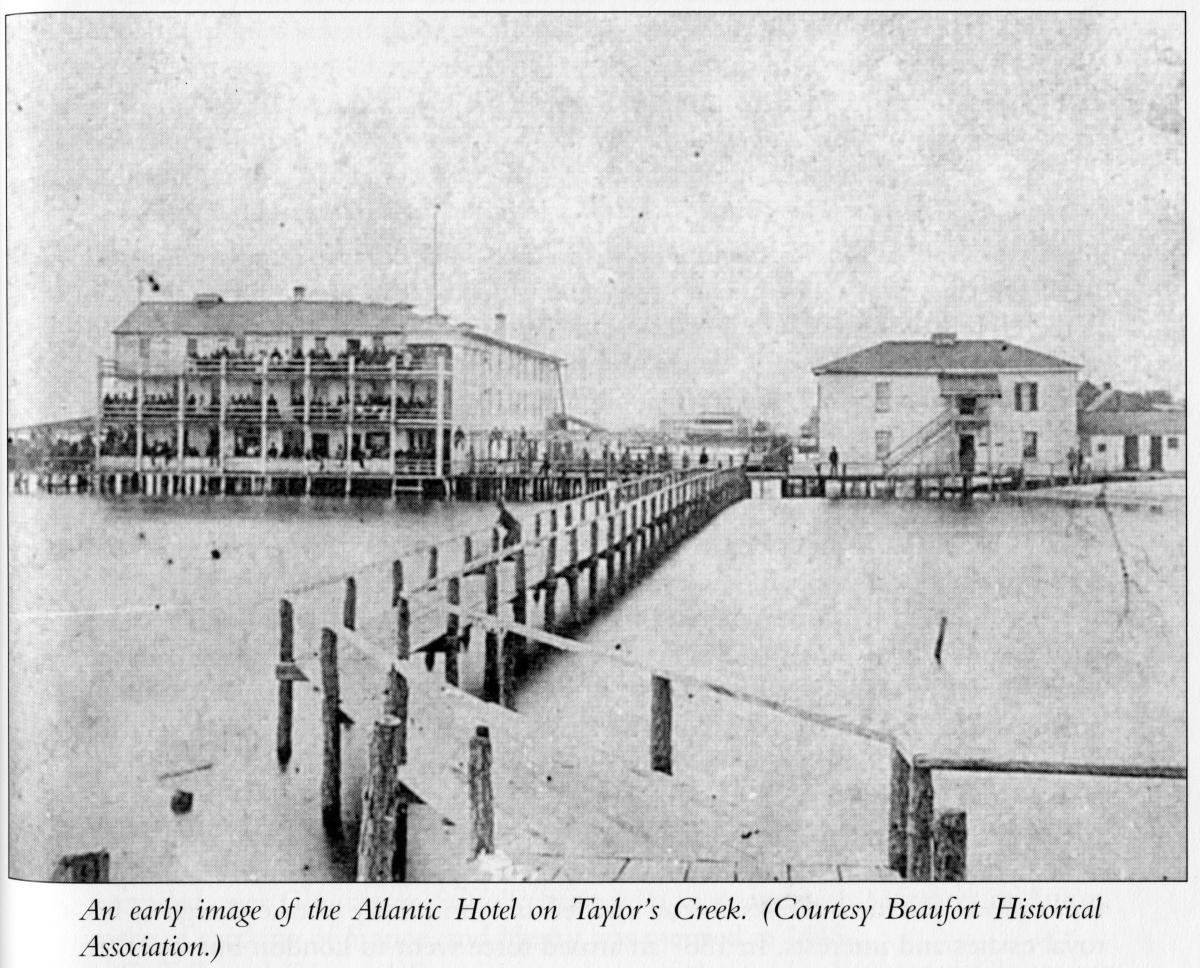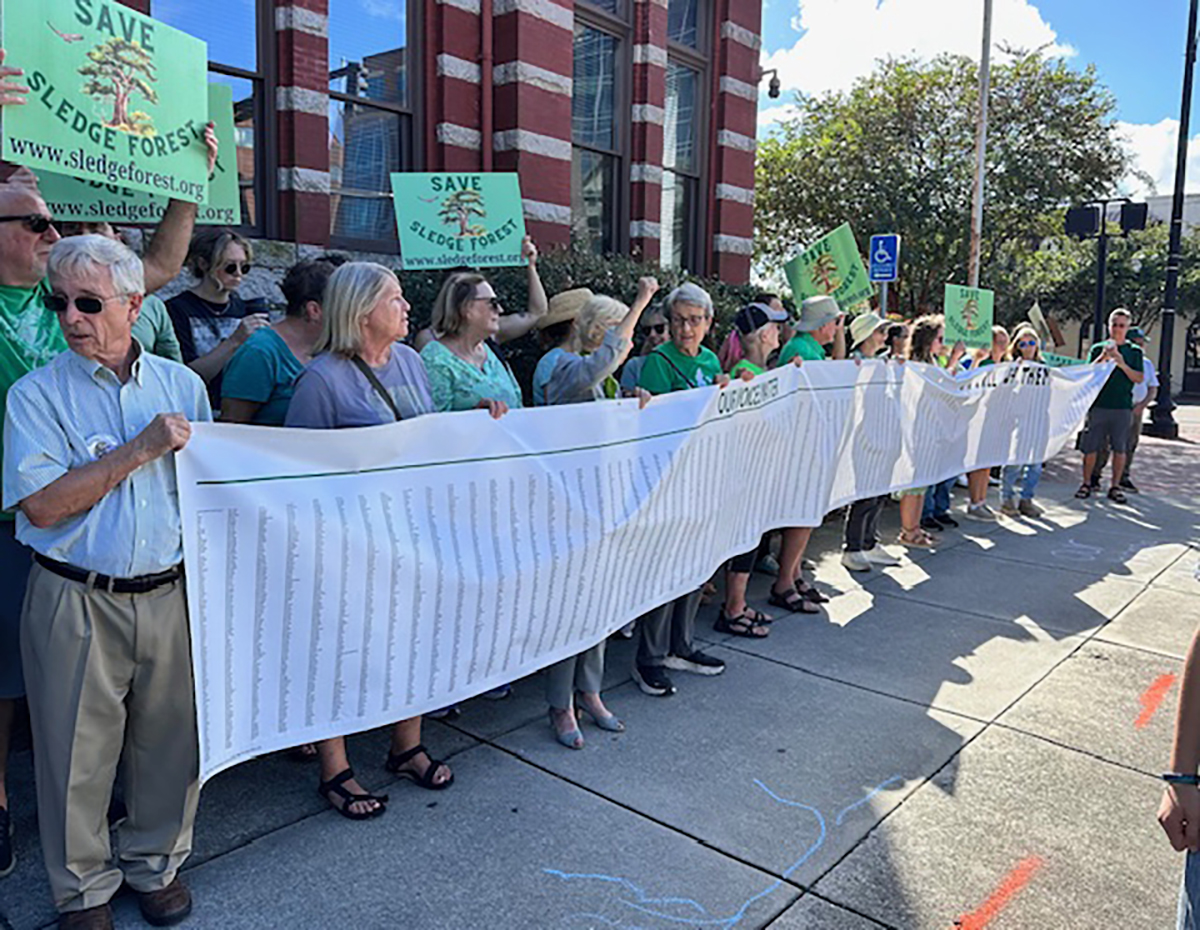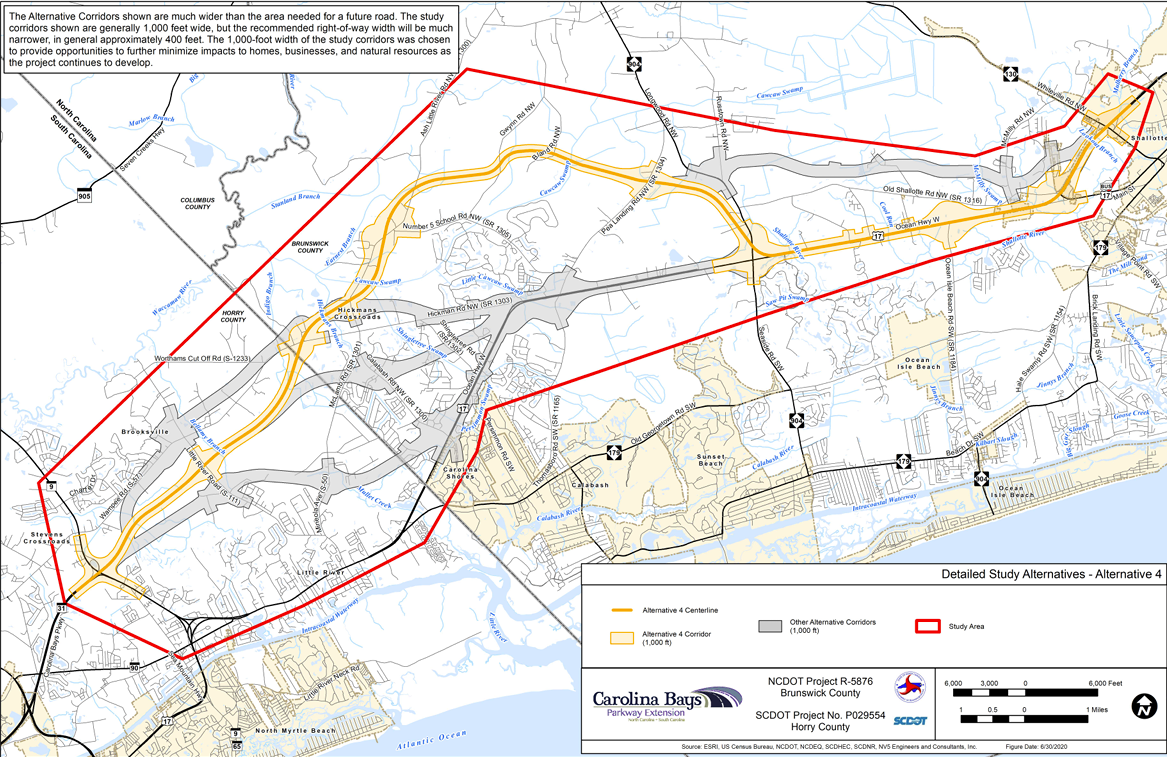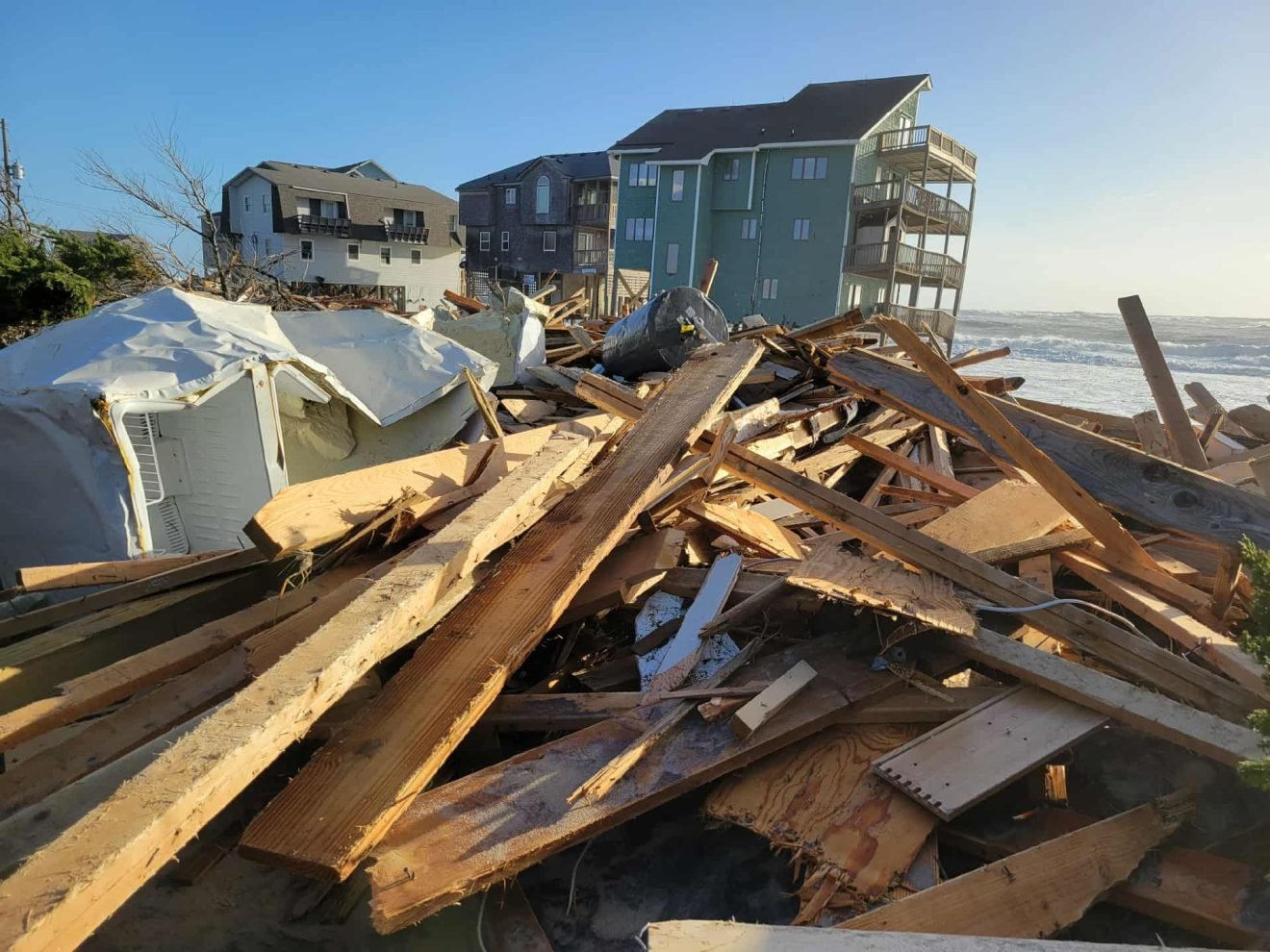
NORTH TOPSAIL BEACH – As construction continues on a super-sized sandbag wall to save a series of homes here from toppling into the Atlantic, town leaders are preparing to reexamine shoreline protection methods, including the possibility of building a terminal groin.
The town’s board of aldermen next month will receive the results of a contingency report that explores ways to build up and maintain North Topsail Beach’s 11.1-mile ocean shore. The report will include the prospect of a terminal groin, an option the board opted out of a few years ago. That decision has since been criticized by some property owners.
Supporter Spotlight
“We’re kind of looking at it all,” said Carin Faulkner, assistant town manager and town clerk. “Overall, we have to look at this as a town-wide issue. I think the board’s overall goal is to get our entire beach engineered. Getting the whole beach nourished has been the main goal. I don’t think we’ve formally changed our priority.”
The prospect of pursuing construction of a terminal groin was briefly discussion during the board’s Jan. 7 meeting when they unanimously approved extending the sandbag revetment up to an additional 50 feet to protect three more properties.
George Vann, one of the property owners, blamed the additional sandbags as the culprit for why up to nine feet of sand has disappeared from underneath his home.
“This is something that the bags caused, not the ocean,” he said at the meeting. “You guys aren’t doing the right thing to these property owners. This is our entire savings plus a mortgage on our house.”
Vann said he could not afford the estimated $67,000 he will have to pay as part of a 50-50 split with the town for the extension.
Supporter Spotlight
The town will pull about $200,000 from its general fund to cover its half. That decision was one Alderman Richard Macartney weighed as to whether to spend that money for a stop-gap measure to save homes or put that money toward building a terminal groin in a few years.
“We owe those three properties to do what is suggested we do,” he said. “Money is not what it’s all about. It’s about keeping faith with the property owners and taxpayers.”
The urgent response to try and save more than 20 properties at the town’s north end from severe erosion has spurred much debate and finger pointing during the past several weeks.
After agreeing in early November to extend an existing sandbag revetment that has armored the shoreline in front of a condominium complex since 2012, the board has been defending the town’s beach protection plan and its decision not to pursue permits to build a terminal groin.
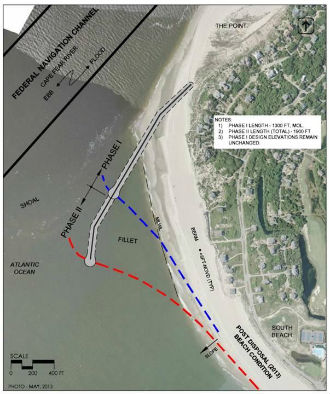 Plans for Bald Head Island’s terminal groin. Image: Village of Bald Head |
Terminal groins are walls of stone, sheet metal or wood usually built perpendicular to shores at inlets and are designed to reduce shoreline erosion by trapping drifting sand.
These hardened erosion control structures were outlawed until 2011, when the General Assembly passed a bill allowing the construction of up to four terminal groins.
At the time, the town had a permit for a channel realignment project, one engineers believed would naturally build up the shoreline over time. Town leaders chose to move forward with the project.
The channel realignment was finished in January 2013 and more than 560,000 cubic yards of sand was spread on 1.5 miles of shoreline at the north end of town.
Since then, the beach south of the inlet hazard area has maintained the sand from the project.
The state-designated inlet hazard area, identified as natural-hazard areas vulnerable to erosion and flooding because of their proximity to ocean inlets, quickly eroded, catching hopeful property owners and town officials off guard.
Erosion of the shoreline south of the inlet has been a persistent problem since 1984, the year the inlet’s bar channel shifted toward an alignment with Onslow Beach.
The shift equated to an average erosion rate of 5.3 feet a year at the north end, one that ultimately took out 11 homes considered “first row” on the beach.
Town officials say shoaling and sand build-up that engineers projected would naturally occur following the channel realignment has yet to happen. This has left the town helping private property owners of the remaining “second row” homes at the north end attempt to save those houses.
The N.C. Coastal Resources Commission in a special meeting in November unanimously approved a variance to the town’s Coastal Area Management Act major permit to extend a sandbag wall 1,450 feet. The bags are allowed to be as much as 40 to 45 feet wide and 20 feet tall.
Half of the estimated $2.3 million project will be paid for through a special fee assessed to 39 parcel owners based on oceanfront frontage. The remainder will be paid for out of the town’s coffers.
According to what he described as “very, very preliminary” data, Ken Willson with Coastal Planning and Engineering said building a terminal groin would cost more than $7 million. That estimated price tag includes design and permitting fees and it would take about three years to design and obtain all of the permits required before building.
The town would look at building about a 1,200-foot-long structure.
While it’s unclear in which direction the board will go, a report fromBill Cleary, a retired geology professor and member of the N.C. Coastal Resources Commission’s Science Panel, concludes the channel realignment will eventually serve its intended purpose.
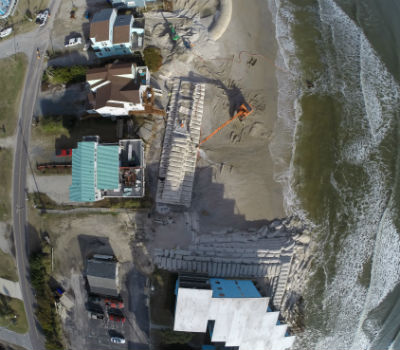 A drone captured this image on Jan. 5, 2015, of the ongoing construction of a giant sandbag wall at N. Topsail Beach. The $2.3 million project extends the revetment 1,450 feet from the existing sandbag wall protecting a condominium. Photo: Town of North Topsail Beach |
The town hired Cleary as an advisor. His report suggests the town stick with its realignment strategy.
“He thinks it’s going to do what it was intended to do over time because it’s a natural process,” Faulkner said.
Should town leaders decide to pursue building a terminal groin they’d be entering the running with three other beach towns, all in varying stages of the permitting process.
Bald Head Island in Brunswick County became the first town to receive a permit to build a terminal groin last year.
“We’ve only issued one permit so there are still three,” said Michele Walker, a spokeswoman for the N.C. Division of Coastal Management. “Depending on what happens with the other towns they could potentially get a permit for a terminal groin. It is a first come, first serve kind of thing.”
Late last year, the Army Corps of Engineers decided to do a supplemental draft Environmental Impact Statement, or EIS, to Figure Eight Island’s proposed terminal groin project.
A final study may be released by mid-summer. The private island’s homeowners association board continues to try and convince property owners whose land is on the north end of the island to grant the association the easements it would need to build the groin across their property. Figure Eight is unincorporated, and the homeowners association doesn’t have the legal authority to condemn property.
A draft EIS for a proposed terminal groin at Ocean Isle Beach is expected be released “very soon,” according to Walker.
The other beach town considering a terminal groin project is Holden Beach. A Division of Coastal Management official said that the state has had a number of meetings with the town, but there has been no forward movement lately.
Legislators briefly discussed during their last session the prospect of removing the cap on terminal groins. A decision was not made and it is unclear if the topic will be broached again when the General Assembly gets down to work on Jan. 28.



